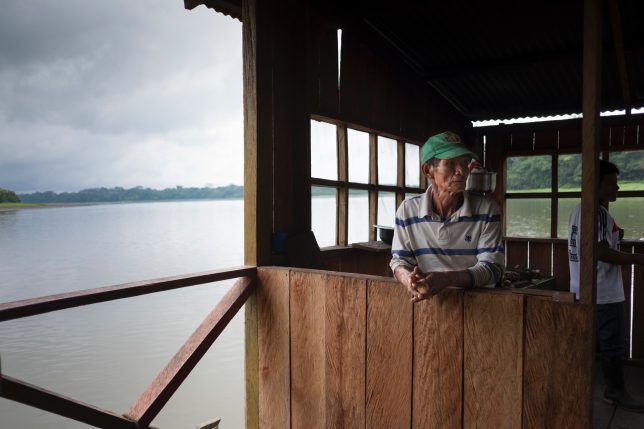A study of nearly 700 studies makes it clear: Environmental injustice is rampant around the world
By Rishi Sugla, AAAS Mass Media Fellow, ensia (CC BY-ND 3.0)
August 10, 2020 (originally appeared in ensia on July 30, 2020) — The coronavirus pandemic and resurgence of the Black Lives Matter movement have many environmentalists paying attention to the inextricable links between marginalized peoples and environmental pollution.
The history of disproportionate environmental impacts on Black, Indigenous, and people of color often goes back for centuries. A recent review of 141 Indigenous groups by University of Helsinki conservation researcher Álvaro Fernández-Llamazares and colleagues published in the journal Integrated Environmental Assessment and Management shows how colonialism directly led to the development of environment-polluting infrastructure built without the consent of — and differentially affecting — communities in their territories.
The study, which dug through nearly 700 studies covering six continents to reveal impacts of pollution on the environment, health and culture of Indigenous peoples, points out that this pattern continues today.

“The literature reviewed clearly shows that [Indigenous peoples] are among the populations at highest risk of impact by environmental pollution of water, land, and biota through both exposure and vulnerability,” the authors wrote.
The study notes that landfills, pipelines, toxic waste storage facilities, sources of radioactive contamination and mines are still being forced upon Indigenous people and directly affect community well-being. In Canada, for example, 20% of drinking water advisories come from Indigenous communities, which make up just 5% of the population. In the western United States, more than 600,000 Native people live within 10 kilometers (6 miles) of an abandoned mine.
Pollution from industrial activities literally flows through Indigenous environments. Contaminants from mines and factories can move into the water, air and soil, where they affect the flora and fauna Indigenous people rely on for traditional hunting, fishing and gathering. Exposure to contaminants has been associated with stark impacts on health.
“Indigenous peoples are particularly vulnerable to the impacts of pollution due to their high and direct dependency on local natural resources, limited access to health care, and relatively low levels of governmental support,” the authors say. Diabetes, hypertension, childhood leukemia, autism, cardiovascular disease, neurological impacts, anemia, cancer, changes in age of menstruation, contaminants in breast milk and anxiety all have been associated with polluting practices on Indigenous territories, the study reports.
Many impacts, however, are not easily measured. The authors write, “While cultural impacts have often been overlooked, the literature suggests that they are substantial in extent and scope.” Environmental degradation, the study notes, has led to the gradual loss of traditional cultural practices that rely on local plants and animals that Indigenous communities hold sacred. Ceremonies that involve drinking water from historical sources can heighten exposure to contaminants. Traditional basket-weaving practices that involve holding reeds in the mouth can become a health risk, for example.
Pollution also affects the spiritual and social health of Indigenous communities. Societal roles are often intimately related to the complex relationships Indigenous peoples have with their environment. Language, culture and community roles surrounding subsistence activities have been abandoned due to contamination and degradation. Spiritual practices involving sacred water sources or sites have similarly been left unviable because of environmental pollutants.
At the same time it documented adverse impact on Indigenous peoples of exposure to contaminants and toxins that they, for the most part, did not create, the study also noted positive impacts Indigenous people have on the environment. Indigenous peoples around the world campaign and resist polluting activities through protests, resistance, demands for policy action and occupation of pollution-producing infrastructure. Many Indigenous communities lead the way at preventing environmental destruction through their direct actions as part of networks of scientists, activists and others, tapping into legal systems when possible. While often framed in public discourse simply as struggles against pollution, the study notes that these actions are directly related to issues of Indigenous sovereignty, justice and land rights.
The study also underscores how traditional management systems help prevent pollution. Indigenous spirituality and social structures tied to the environment protect, remediate and restore sacred sites and community areas. In some cases, these practices have been shown to even support recycling of nutrients in local ecosystems, and Indigenous water cultures have been key to preventing pollution in freshwater environments.
The study concludes that Indigenous people, like many marginalized or oppressed communities, are on the receiving end of disproportionate impacts of environmental pollution. At the same time, these communities are not just victims of pollution. They have long led resistance against pollution-generating industries and activities and worked to protect biodiversity around the world. To reduce the toll of pollution and to maximize the benefits of their environment-protecting actions, the researchers recommend bringing Indigenous people and their perspectives front and center in environmental action.
“Greater engagement of IPs on environmental governance can help to incorporate IPs’ social, spiritual, and customary values in environmental quality and ecosystem health,” they write. “We argue that IPs should be part of any conversation on policy options to reduce risks of pollution to human well‐being, ecosystem services, and biodiversity.”
